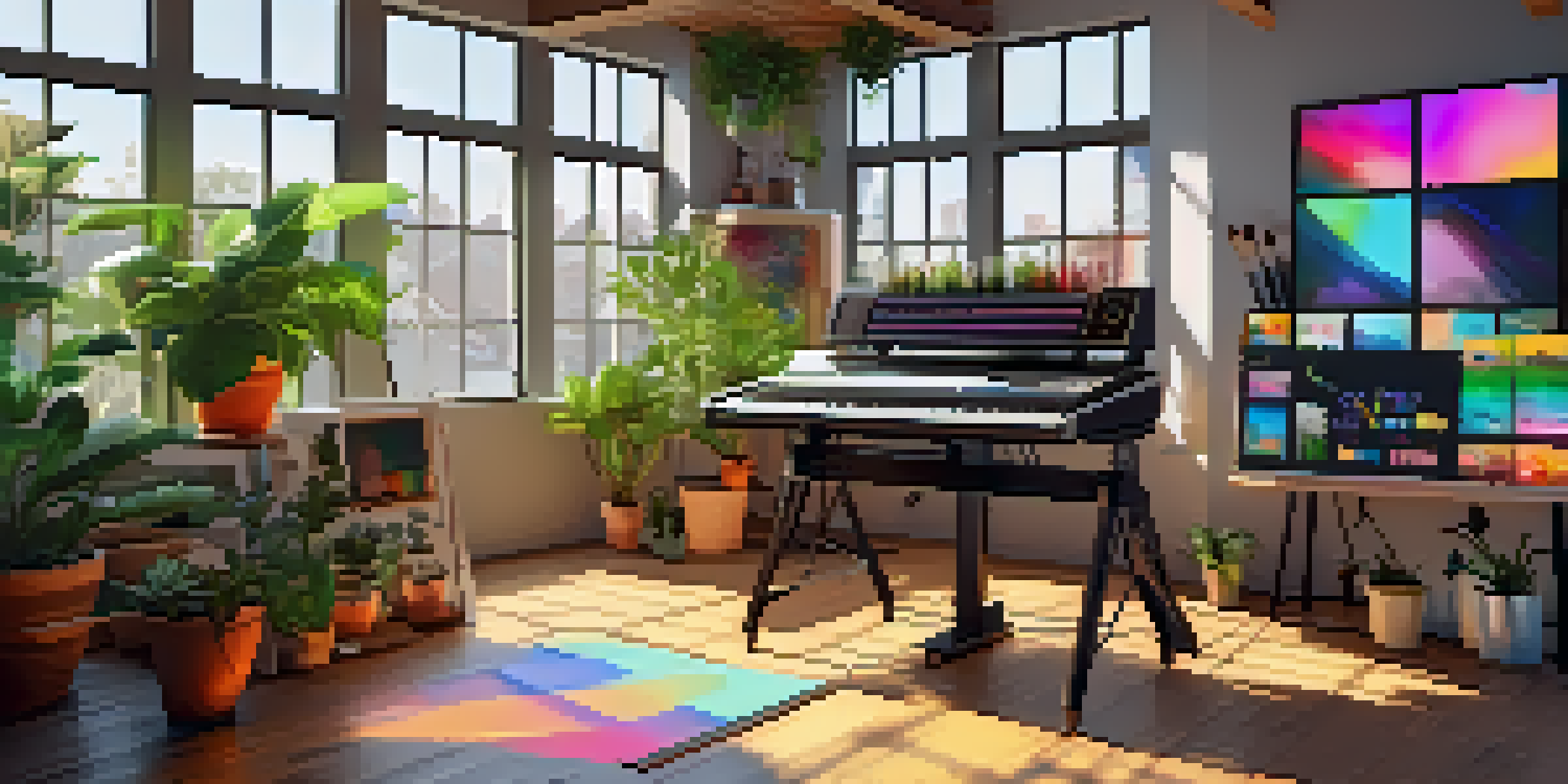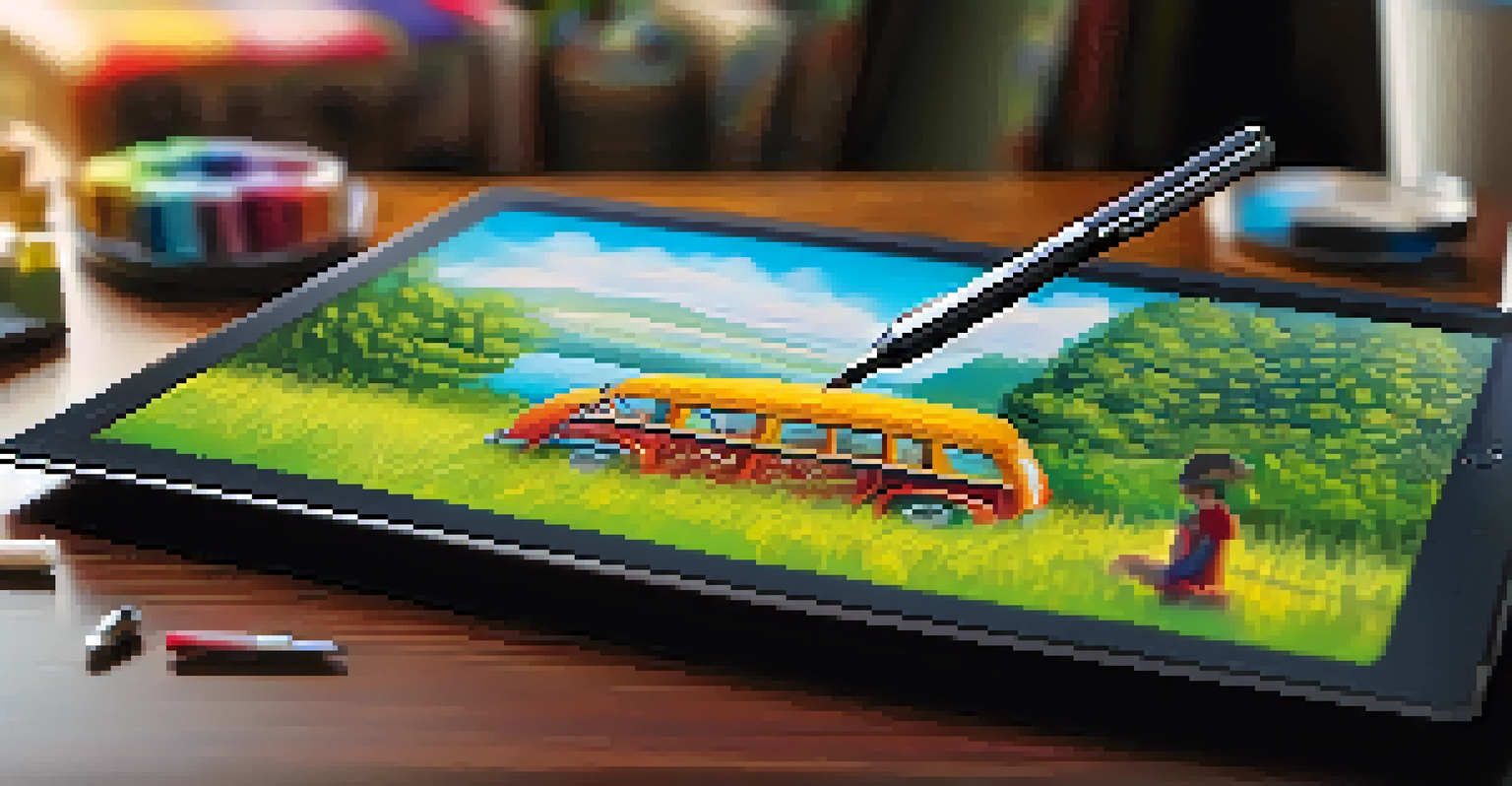The Artist's Guide to NFT Minting: Steps for Success

Understanding NFTs: What They Are and Why They Matter
NFTs, or Non-Fungible Tokens, are unique digital assets that represent ownership of a specific item, often using blockchain technology. Unlike cryptocurrencies such as Bitcoin, which are interchangeable, each NFT has distinct characteristics that set it apart. This uniqueness is what makes NFTs particularly appealing to artists, collectors, and investors alike.
Art is not freedom from discipline, but disciplined freedom.
For artists, NFTs provide a new avenue for showcasing and selling their work. Imagine being able to sell a digital painting as a one-of-a-kind asset rather than just a file that can be copied endlessly. This shift not only adds value to digital art but also opens up new revenue streams through royalties on secondary sales.
As the NFT space continues to evolve, understanding its significance can empower artists to leverage this technology effectively. Embracing NFTs can set you apart in a competitive market and offer innovative ways to connect with your audience.
Choosing the Right Blockchain for Your NFTs
When it comes to minting NFTs, selecting the right blockchain is crucial. Ethereum is the most popular choice due to its established marketplace and user base, but it's essential to consider transaction fees and environmental impact. Other blockchains like Solana and Tezos are gaining traction, offering lower costs and faster transactions.

Each blockchain has its own set of features and advantages, so take the time to research and compare them. For instance, if you're focused on sustainability, you might lean towards blockchains that utilize proof-of-stake mechanisms, which are more energy-efficient. Understanding these differences can help you make an informed decision that aligns with your goals and values.
NFTs Empower Artists and Collectors
NFTs provide a unique opportunity for artists to sell their work as one-of-a-kind digital assets, enhancing values and revenue potential.
Ultimately, the right blockchain choice can influence your success in the NFT space. Consider your target audience and where they are likely to engage with your art when making this decision.
Creating Digital Art: Tips for NFT Readiness
Before minting your NFT, it's important to ensure your digital artwork is polished and ready for the marketplace. This means paying attention to details like resolution, file format, and overall presentation. High-quality images or videos will not only attract buyers but also enhance your reputation as a serious artist.
Digital art is not a separate thing; it's a new way to express art.
Think about how your art will be perceived in a digital format. Consider adding interactive elements or animations to make your NFT stand out. This creative approach can create a more immersive experience for collectors and increase the perceived value of your work.
Remember that first impressions matter. By presenting your art in the best possible light, you increase the chances of attracting potential buyers and collectors to your unique pieces.
Minting Your NFT: A Step-by-Step Process
Minting an NFT is the process of turning your digital artwork into a token on the blockchain. The first step is to choose a marketplace like OpenSea or Rarible, where you can create and list your NFT. Each platform has its own set of instructions, so follow them carefully to ensure a smooth minting experience.
Once you've selected a marketplace, create a digital wallet if you don't have one already. This wallet will store your NFTs and allow you to receive payments. After connecting your wallet to the marketplace, you can upload your artwork, add descriptions, and set your price.
Choosing the Right Blockchain Matters
Selecting the appropriate blockchain for minting NFTs is crucial, as it affects transaction costs, environmental impact, and audience engagement.
Finally, confirm the minting transaction and pay any associated fees. Once completed, your NFT will be live on the marketplace, ready for potential buyers to discover and purchase.
Marketing Your NFT: Building a Strong Presence
After minting your NFT, the next step is effective marketing. Start by leveraging social media platforms like Twitter, Instagram, and TikTok to showcase your artwork and share your NFT journey. Engaging content, behind-the-scenes glimpses, and storytelling can help you connect with potential buyers on a personal level.
Consider joining NFT communities and forums where you can share your work and gain insights from fellow artists and collectors. Networking is key in the NFT space; building relationships can lead to collaborations and increased visibility for your art.
Don't underestimate the power of a well-crafted narrative around your NFT. Share the inspiration behind your artwork and what makes it unique; this personal touch can resonate with collectors and encourage them to invest in your pieces.
Understanding Royalties: A Key Benefit of NFTs
One of the most attractive features of NFTs for artists is the ability to earn royalties on secondary sales. This means that every time your NFT is resold, you receive a percentage of the sale price. This ongoing revenue stream can significantly enhance your income potential as an artist.
To set up royalties, you'll need to specify the percentage during the minting process. Most marketplaces allow you to define this, and it typically ranges from 5% to 10%. It's essential to understand how these royalties work, as they can provide a sustainable income source long after the initial sale.
Royalties Offer Ongoing Income
Artists can benefit from royalties on secondary sales of their NFTs, creating a sustainable income stream beyond the initial sale.
This feature not only benefits artists but also encourages collectors to invest in your work, knowing that they can support you with each resale. Understanding and utilizing royalties can help you build a more robust financial future in the art world.
Staying Informed: The Evolving NFT Landscape
The world of NFTs is constantly changing, with new trends, platforms, and technologies emerging regularly. Staying informed about these developments is crucial for artists looking to succeed in this space. Following industry news, attending webinars, and participating in online discussions can help you keep your finger on the pulse.
Engaging with the community is another way to stay updated. Many artists share their experiences, tips, and insights, which can provide valuable lessons as you navigate your own NFT journey. Joining forums or Discord groups dedicated to NFTs can open doors to collaboration and mentorship.

By remaining proactive and adaptable, you can position yourself to take advantage of new opportunities as they arise. Embracing change in the NFT space can be a game-changer for your artistic career.